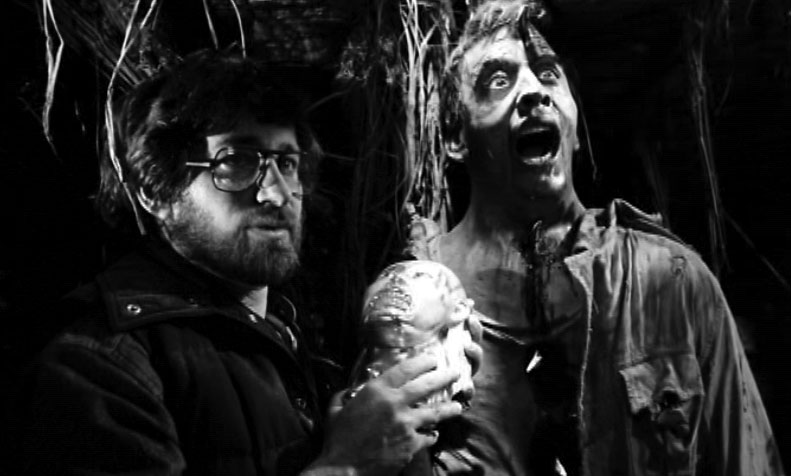
How do Woody Allen and Martin Scorsese use the city of New York City not only as an object of affection, but as the means for an ideological stance in their work?
New York has long been ‘base camp’ for East Coast filmmaking in the USA. In many ways, it possesses clout that Hollywood has only ever dreamed of. In a filmmaking sense, the spirit of New York has forever been evident in the art that is exported from America’s largest city. One might even argue that New York is the true home of modern cinema rather than Hollywood as the world’s first film featuring synchronized dialogue sequences showcased the Jewish ghettos of Manhattan’s Lower East Side, an area that over time became synonymous with present day storytelling (When Harry Met Sally and Once Upon A Time In America etc). If asked to name New York’s first quintessential film, modern auteurs would more than likely place Alan Crosland’s The Jazz Singer at the top of that list. Through that film, filmmakers like Woody Allen and Martin Scorsese were able to feel what it is like to not only see, but hear their city on the big screen for the first time. It is a memory that I am sure they both share, as their work has gone on to provide the more lasting examples of how New York has looked and sounded through the ages of cinema.
While there are noticeable similarities regarding their New York-based work, the pictures painted by the two directors are greatly contrasted. A parallel fondness is evident in their films, but only in the way that their relationship with the city is like a relationship with a lover. Allen’s New York is the quirky, easy-going life-partner, while Scorsese’s is the short-tempered, domestically violent prone bitch that you can’t divorce because you’re Catholic.
In Allen’s ‘comedy of manners’ aptly titled Manhattan, his admiration for his hometown is evident within the opening sequence through a variety of attractive establishing shots of the city coupled with a male voice-over (his own) that lists numerous reasons as to why he ‘adored New York’. This is presented through the device of a writer trying to write the first line in the first chapter of a book. Literal scene setting as it may be, it never feels like a gimmick. Through this voice-over, Allen covers temperaments ranging from soppy (‘this was still a town that existed in black and white and pulsated to the great tunes of George Gershwin’) to aggressive (‘to him it was a metaphor for the decay of contemporary culture’) while never losing sight of his key point; love, beginning every passage with the line, ‘he adored New York City.’ The entire opening sequence (not coincidentally) is shot in black and white with a Gershwin soundtrack. Somehow, through these opening frames of Manhattan’s bustling streets and regular Joes, none of the magic is lost through the lack of visual colour. Even though the bright lights and neon signs of the city are dulled visually, Allen more than makes up for this by allowing New York to shine through his light; an appreciative opening voice-over that poetically dances with Gershwin, proving that sometimes through words, there can be colour. Or even, that colour is irrelevant when you’re saying the right things, a viewpoint that Allen commonly credits to the work of Ingmar Bergman, who trademarked the use of colourful, realistic, and often improvised dialogue between his characters.
Scorsese’s ‘Mean Streets’ in which ‘he drew on his youth in New York’s Little Italy’, though entirely different tonally, still draws parallels with ‘Manhattan’ during it’s own opening sequence. Its features shots of the city at its most alive (during 9-5 work hours and evening street parties) and features a voice over from the director (as Harvey Kietel’s character, Charlie). Scorsese though, paints a slightly different picture of the city he calls home.
‘You don't make up for your sins in church. You do it in the streets. You do it at home. The rest is bullshit and you know it.’
Between this voice-over and the Motown-laden title sequence, Scorsese is able to establish the tone for his entire film in a short scene featuring the film’s protagonist. Charlie disturbedly wakes up in his apartment; visually panicked and alone. It’s daytime outside, but the blinds are drawn. He gets up and inspects his face in the mirror only to lie back down as police sirens sound. Using only this short sequence, Scorsese managed to completely convey a character living in constant fear of his surroundings. So afraid, and so stressed that even the sleep he eventually manages during daylight hours is disturbed. Questions are instantly asked. Why is he afraid? Why can’t he sleep at night? What is it that happens at night that has affected his sleep pattern so?
The sequence portrays New York as a dark, shadowed city of sin. With the subtle addition of siren-sound and a lack of natural light, Scorsese creates feelings of threat and isolation; both themes conveyed in under 90 seconds. All of these questions begging answers that will reveal themselves during the film. To be able to establish location, character and atmosphere and ask this many questions in such a short space of time is classic cinematic storytelling at it’s strongest.
Allen’s leftist emphasis on the collective and communal offers up the city as the home of ‘beautiful women and street smart guys who seemed to know all the angles’. It is defined in his opening monologue as a city that is ‘tough and romantic’; a place that is both edgy and beautiful, with something for everyone. A New York that is varied in character, but ultimately equal in its appeal.
‘Mean Streets’ very much takes up a rightist, hierarchical stance through a use of the instillation of fear as a leadership tactic over the course of the picture. The idea of a fearful respect for chains of command is a theme that plays out from beginning to end, immediately instilling that fear in its opening scene. If rightists insist that that ‘the brightest and best are entitled to a larger share of power and wealth’, then the characters of Michael (the head strong loan shark) and Johnny Boy (the reckless gambler and borderline psychotic) are literal support of this particular ideology within the film as a whole. The idea that authority should be respected and that privately owned institution (Tony and Michael’s bar) should be driven by profit are two further examples of the rightist stance that is evident throughout Scorsese’s film.
While both films share strengths in their initial narrative footholds, glorifying New York as the perfect place to tell a story, it is in their ideologies that they differ considerably. When considering the two films from a ‘Democratic vs Hierarchical’ point of view, they could not be more different.
Allen, Woody (1979) Manhattan, USA: United Artists
Bordwell, D and Thompson, K. (2010). Ch. 12 - Film Art and Film History: The New Hollywood and Independent Filmmaking. In: Film Art - An Introduction. 9th ed. New York: McGraw-Hill. p478-479.
Linzer, D.A. (2011). The Left-Right Ideological Spectrum in Global Mass Opinion. Available: http://userwww.service.emory.edu/~dlinzer/Linzer-leftright.pdf. Last accessed Nov 2011.
Löthwall, L. (1968). AN INTERVIEW WITH INGMAR BERGMAN Originally published in Take One 2, no. 1 (September-October 1968): 16-18. Available: http://bergmanorama.webs.com/takeone_68.htm. Last accessed Nov 2011.
Scorsese, Martin (1973) Mean Streets, USA: Warner Bros.



